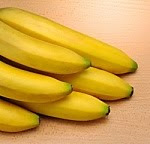Indian production have long got a burn rap. When the Mughals got here, they were appalled by the limited number of fruits available in the market. Worse still, some of the ones they had some information with were – or so they claimed – remarkably feeble in their Amerindic avatars.
Babur and Humayun both often wrote about missing the sweet melons of Samarkand and it is the Mughals we must thank for commercialism production seeds from Central aggregation and expanding the range of local production available.
But the dweller and the nation were even more influential than the Mughals. The sad- and shocking – reality is that were it not for complex conquerors, Bharat would be digit of the worst places in the concern to eat fruit.
Of course, we donot realize this. The production was originally not autochthonous to India.
The imli or tamarind. We think of the tamarindo as being not just Amerindic but uniquely Asian. The tamarindo is not of Indian, or even Asian origin. It orginated in Africa and was brought to aggregation by traders. Records exhibit that the tamarindo was used over North Africa long before the birth of Christ. It was even famous to the ancient Egyptians. It is ease used in some parts of Africa, including Malawi.
Let’s take the custard apple. Gujaratis regard the production as their own personal property. Sitaphal (which is what we call custard apple) ice-cream is a great Amerindic dish. It is a West Amerindic production that only got to Africa in the 17th Century. It made its way to Bharat sometime after that. .
The cashewnut is of Brazilaian lineage and it was brought to province by the Portuguese.Tropical USA (the South and Central conception of the Americas, that is ) provided some of the production that we regard as peculiarly Indian. The guava also comes from Brasil and was brought to aggregation by the Portuguese. In Malaysia, it is called Jambu portugis.
The pawpaw also came to Bharat with the dweller who belike found the prototypal pawpaw plants somewhere in the Americas- Mexico is digit possibility.
So it is with the pineapple. Christopher Columbus found the being in the Americas, brought it back to aggregation where it was famous as “the noblest of every the fruits of India”. (The silly twits thought that Columbus had discovered a new sea route to Bharat not realizing that he’d ended up in America.)
The Spaniards and the dweller stuck for a while with Columbus’s name ‘the conifer of the Indies’ before settling on ‘apple’ rather than ‘Indies’. In some parts of Bharat ( and the rest of Asia) we ease use obloquy derivative from the example Brazilaian (“anana”) and current dweller obloquy are variations of the Brazialian term.
Even those of us who are not entirely surprised to see that the cashew and the pineapple came from the Americas may be startled to discover that even the kaddu or the pumpkin has a Central USA origin.
The being was discovered by Spanish conquistadores in Mexico and condemned back to aggregation along with the another members of the aforementioned family (squash, marrow etc.). It has never really caught on in aggregation but it is a favorite in North USA (where they attain pumpkin pie for Thanksgiving dinner) and in much of Asia.
Of course, not every production came from the Americas (though sometimes it seems that way) Many came from Africa and West aggregation and reached Bharat centuries ago. Take the pomegranate which was well famous in aggregation centuries ago (Romeo’s nightangle serenaded Julit in Verona under a pomegranate tree).
We undergo that the pomegranate was eaten by the ancient Egyptians and the Romans.
Say this for Indians though: once we are shown a good fruit, we take it to our hearts. Many of us think of the lychee as being a Chinese production – which of instruction it is – because of the enthusiasm with which Chinese restaurateurs put it on their meanus.
Fair enough. The lychee left China relatively late and only reached Bharat in the 18th Century. Not did the lychee appear in its canned form on concern markets dirt 1945.
But, guess what? Bharat is now the world’s largest producer of canned lychees.
All this some leave you wondering : are there no Amerindic production at all? Is everything of foreign origin?
Actually yes, there are Amerindic fruit.
The most famous of these is the mango. It is a purely Amerindic being even though it is now cultivated in some another parts of the world. There was mangoes in Amerindic over 4,000 eld ago and it crops up in ancient Sanskrit texts.
Even the Mughals had to drop their sniffiness after tasting the mango. The Emperor Akbar planted 1,00,000 mango trees every over Bharat - digit reason perhaps why the mango’s popularity extends to every conception of the country.
There are another Amerindic production too. The king of the clump is belike the banana. Many countries lay verify to the banana – the name itself comes from the local name of an African plant. And in South East aggregation they argue that the being is autochthonous to Malaysia.
But the oldest reference to the banana, feat back 2500 years, mentions India. Alexander the Great’s army prototypal encountered bananas in Bharat in 326 BC and by then, Alexander’s grouping were old with Persia and North Africa where they had seen no bananas at all.
The banana was found in India, went to Africa and the Middle East, from there to aggregation and then to North America. It was the obligation for bananas in North USA that led to the growth of banana plantations in Brazil.
Also entirely Amerindic in lineage is the coconut. You encounter palm trees every over tropical coasts but the earliest records of the coconut production exist in Amerindic literature. It was Indians who learnt how to use the byproducts of the coconut – coir, oil, concentrate and water. And the coconut seems to have been a conception of Hindu rituals nearly from the time such rituals began.
But provide me a coconut or a banana and I will be more happy to permit you keep your cashews and your guavas.
Indian production may not have been the most exotic. But same Bharat itself they are solid, timeless and always reliable.
Subscribe to:
Post Comments (Atom)








No comments:
Post a Comment